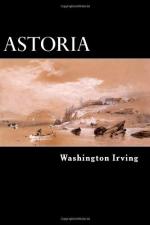The existence of this river, however, was known long before the visits of Gray and Vancouver, but the information concerning it was vague and indefinite, being gathered from the reports of Indians. It was spoken of by travellers as the Oregon, and as the Great River of the West. A Spanish ship is said to have been wrecked at the mouth, several of the crew of which lived for some time among the natives. The Columbia, however, is believed to be the first ship that made a regular discovery and anchored within its waters, and it has since generally borne the name of that vessel. As early as 1763, shortly after the acquisition of the Canadas by Great Britain, Captain Jonathan Carver, who had been in the British provincial army, projected a journey across the continent between the forty-third and forty-sixth degrees of northern latitude to the shores of the Pacific Ocean. His objects were to ascertain the breadth of the continent at its broadest part, and to determine on some place on the shores of the Pacific, where government might establish a post to facilitate the discovery of a northwest passage, or a communication between Hudson’s Bay and the Pacific Ocean. This place he presumed would be somewhere about the Straits of Annian, at which point he supposed the Oregon disembogued itself. It was his opinion, also, that a settlement on this extremity of America would disclose new sources of trade, promote many useful discoveries, and open a more direct communication with China and the English settlements in the East Indies, than that by the Cape of Good Hope or the Straits of Magellan. * This enterprising and intrepid traveller was twice baffled in individual efforts to accomplish this great journey. In 1774, he was joined in the scheme by Richard Whitworth, a member of Parliament, and a man of wealth. Their enterprise was projected on a broad and bold plan. They were to take with them fifty or sixty men, artificers and mariners. With these they were to make their way up one of the branches of the Missouri, explore the mountains for the source of the Oregon, or River of the West, and sail down that river to its supposed exit, near the Straits of Annian. Here they were to erect a fort, and build the vessels necessary to carry their discoveries by sea into effect. Their plan had the sanction of the British government, and grants and other requisites were nearly completed, when the breaking out of the American Revolution once more defeated the undertaking. **




